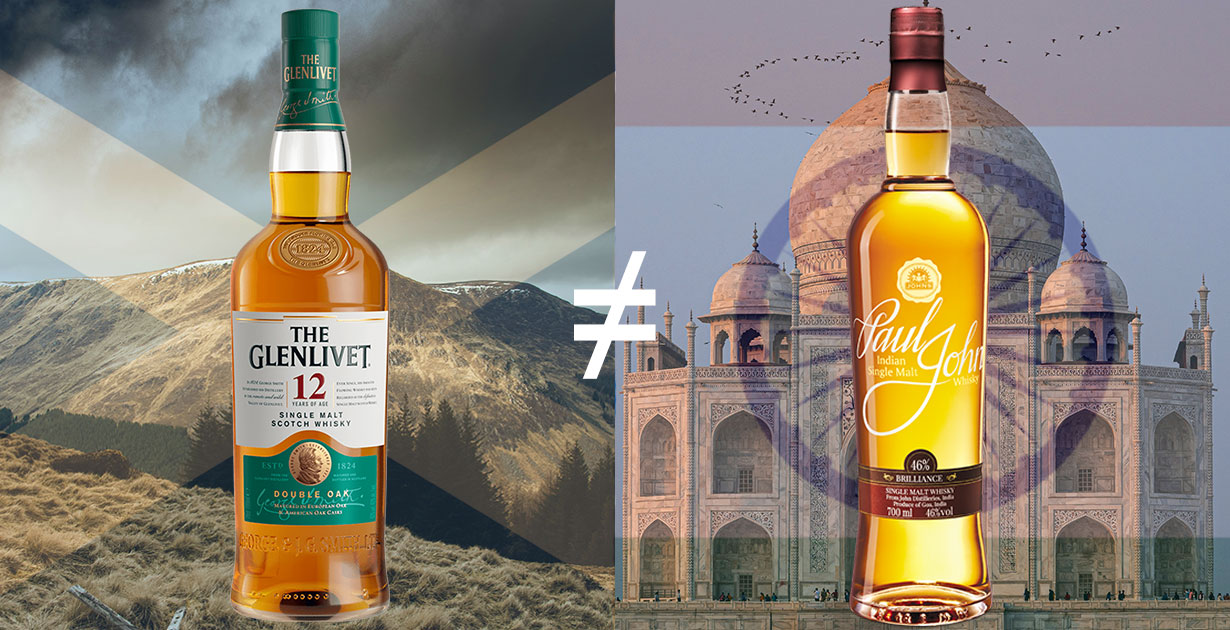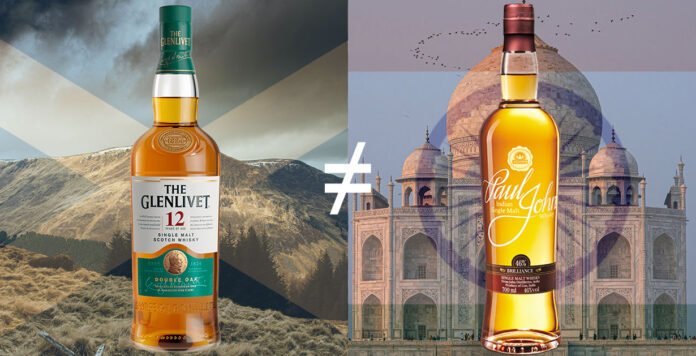
Whisky is one of the world’s most cherished drinks, loved both as a daily indulgence and a luxury. While Scotland’s whisky-making heritage has long been regarded as the gold standard, the Indian whisky scene offers a fascinating contrast.
India, which consumes more whisky than any other country, produces a style of whisky that differs greatly from its Scottish counterpart in many ways—from grain selection to maturation conditions, cultural drinking customs to flavor profiles.
Scotch vs. Indian Whisky: Historical Origins
Scotch: Scotland’s whisky tradition is centuries old, first documented in 1494 when Friar John Cor was granted malt to make “aqua vitae” (water of life). Over time, whisky production evolved from a monastic craft into an illicit trade, eventually legitimised by the 1823 Excise Act. Pioneers like George Smith of The Glenlivet and John Walker helped elevate scotch into a global phenomenon. The 19th century saw scotch flourish, aided by the invention of the column still and the devastation of French vineyards by phylloxera, which pushed scotch to prominence worldwide.
Indian: India’s whisky journey began in the 1820s under British colonial influence, with Edward Dyer establishing the country’s first distillery, Kasauli distillery, which later moved to Solan. For much of the 20th century, Indian whisky was primarily molasses-based, closer to rum than scotch. However, this began to change in the 1980s with the launch of India’s first single malt, Amrut Single Malt, which gained international recognition when it was launched in Glasgow in 2004. Following Amrut’s lead, distilleries like Paul John and Rampur have emerged, producing authentic, high-quality single malts that are putting India on the whisky map.
Production Regulations & Grain Composition
Scotch: Scotch whisky is one of the most tightly regulated spirits globally. According to the Scotch Whisky Association, scotch must be made in Scotland from water and grains, aged in oak casks for at least three years. A variety of grains can be used, but the whisky must not exceed 94.8% ABV during distillation, and only water and plain caramel coloring are permitted as additives. These strict regulations ensure consistency and quality, with categories like single malt (100% malted barley), single grain, and blended scotch helping to maintain high standards.
Indian: Indian whisky, by contrast, has historically been less regulated. Much of the whisky produced in India was derived from molasses, technically making it closer to rum. The bulk of Indian whisky consumed domestically is still classified as “Indian-Made Foreign Liquor” (IMFL), often a molasses-based spirit with a small percentage of aged grain whisky. However, premium brands like Amrut, Paul John, and Indri now produce 100% malted barley single malts aged in oak barrels, often using six-row barley grown in northern India, which has a different starch profile from Scotland’s two-row barley.
Maturation Conditions & Climate Impact
Scotch: Scotland’s cool, damp climate creates ideal conditions for whisky maturation. Temperatures range from 5-20°C, ensuring a steady humidity, allowing whisky to mature slowly. This gradual process leads to a smoother, more complex spirit, with the whisky losing about 2% of its volume annually (the “angel’s share”). Maturation takes time, with scotch whiskies typically aged for 10, 12, or even 18+ years to develop optimal flavor.
Indian: In stark contrast, India’s tropical climate accelerates the maturation process. Distillery regions like Bangalore and Goa experience temperatures of 30-40°C, which means whisky ages much faster. In fact, one year in India is said to equal about three years in Scotland. The rapid evaporation rate (8-12% annually) results in whisky absorbing oak compounds more quickly, leading to rich, wood-influenced flavors in as little as 4-5 years. However, this also means that whisky can become too concentrated or overly oaked if aged for too long.
Tasting Profile Comparison
Scotch: The flavor spectrum of scotch whisky is incredibly diverse. Islay malts like Laphroaig are smoky with medicinal, peaty notes, while Speyside whiskies such as Glenfiddich offer gentler, sweeter profiles with notes of honey, vanilla, and orchard fruits. Highland whiskies may range from robust and malty to sherried, while Lowland malts are lighter and more delicate. Blended scotches like Johnnie Walker Black combine these regional styles into accessible, balanced expressions.
Indian: Premium Indian whiskies generally offer bold, distinct flavors. They often feature intense vanilla, toffee, and caramel notes from the rapid oak extraction, complemented by tropical fruit flavors such as mango, banana, and coconut flavors rarely found in scotch. Indian whiskies also carry a distinctive spicy note, often described as “Indian black pepper.” With higher ABVs (46%+), Indian whiskies deliver vibrant, punchy flavors, which, despite the whisky’s relative youth, feel remarkably mature.
How to Enjoy Scotch & Indian Whisky
Scotch: In Scotland, whisky is typically enjoyed neat or with a small splash of water, usually served in a tulip-shaped Glencairn glass to concentrate aromas. Social rituals include the after-dinner dram, often accompanied by a toast of “Slàinte Mhath!” (good health), celebrating scotch as a contemplative, sipping whisky.
Indian: In India, whisky is often diluted, served with soda or water in a “peg”—the standard measure, typically 60ml. It’s commonly served cooler, sometimes with ice. Indian whisky culture is more about socialising than sipping, with whisky facilitating conversation.
A Tale of Two Traditions
Scotch and Indian whisky represent two distinct traditions in whisky-making. Scotch, with its centuries-old heritage, offers slow maturation and complex flavors. In contrast, India’s tropical climate forces a faster maturation process, leading to vibrant, bold whiskies that are youthful yet rich.
As Indian distilleries continue to adopt international standards while preserving their unique characteristics, the lines between these two whisky worlds are beginning to blur, offering whisky enthusiasts a chance to explore new and exciting flavors.
Read the full article at The Essential Differences Between Scotch & Indian Whisky

